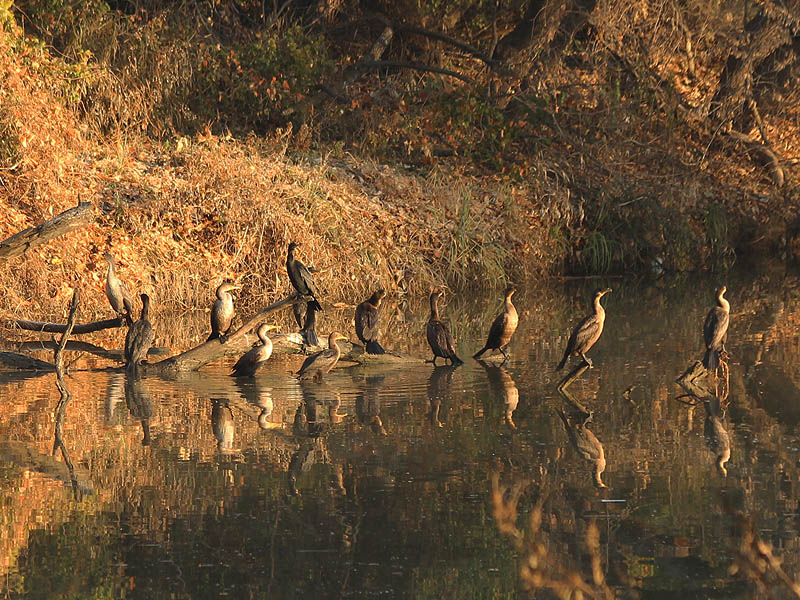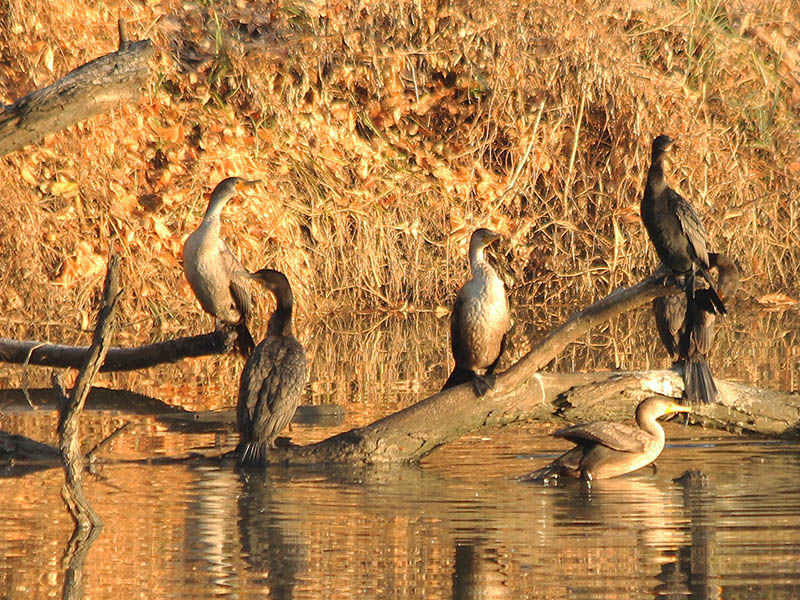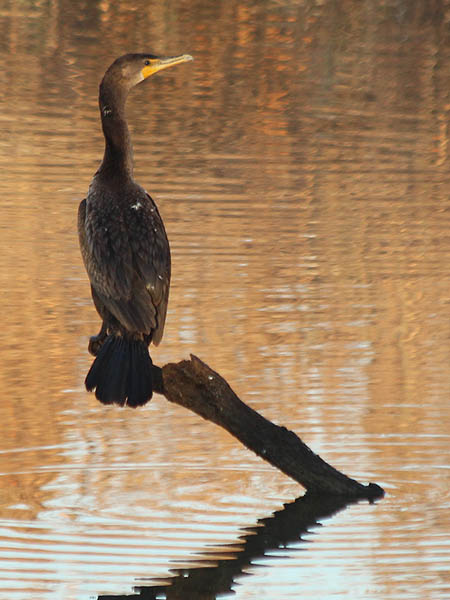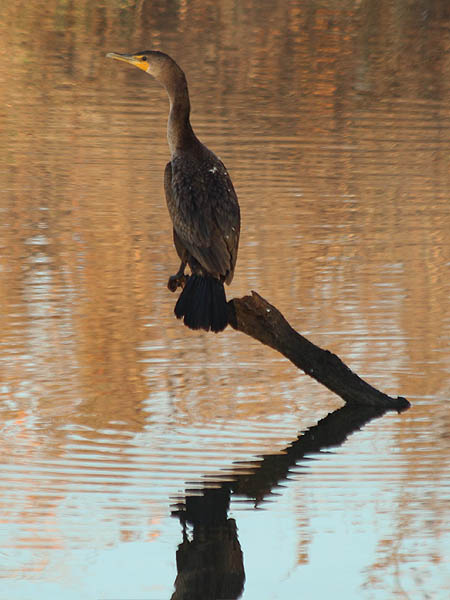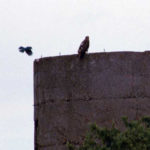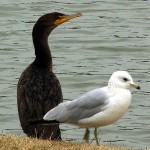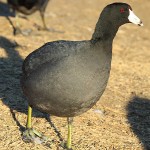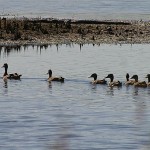These Double-crested Cormorants were found congregating on a cool but clear December morning. The dozen or so birds had found a sunny perch on the Elm fork of the Trinity River near the Sandy Lake Road bridge.
There are two types of cormorants that frequent the Dallas/Fort Worth area: the Double-crested Cormorant and the Neotropic Cormorant. The two species resemble each other superficially, but the Double-crested Cormorant is slight larger than the Neotropic. The two birds also have a number of more subtle differences. Here is what Wikipedia has to say about the Double-crested Cormorant:
The double-crested cormorant is a large waterbird with a stocky body, long neck, medium-sized tail, webbed feet and a medium sized hooked bill. It has a body length of between 70–90 cm (28–35 in) long, with a wingspan of between 114–123 cm (45–48 in). Double-crested cormorants weigh between 1.2–2.5 kg (2.6–5.5 lb). Males and females do not display sexual dimorphism.
This species has dark-colored plumage with bare super-loral skin and gular skin that is yellow or orange. An adult in breeding plumage will be mostly black with the back and coverts being a dark grayish towards the center. Nuptial crests, for which the species is named, are either white, black or a mix of the two. These are located just above the eyes with the bare skin on the face of a breeding adult being orange. A non-breeding adult will lack the crests and have more yellowish skin around the face. The bill of the adult is dark-colored. The double-crested cormorant is very similar in appearance to the larger great cormorant, which has a more restricted distribution in North America, mainly on the Canadian maritime provinces; it can, however, be separated by having more yellow on the throat and the bill.
The plumage of juvenile double-crested cormorants is more dark gray or brownish. The underparts of a juvenile are lighter than the back with a pale throat and breast that darkens towards the belly. As a bird ages, its plumage will grow darker. The bill of a juvenile will be mostly orange or yellowish.

